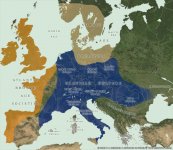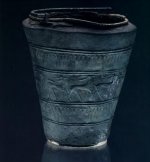torzio
Regular Member
- Messages
- 3,964
- Reaction score
- 1,227
- Points
- 113
- Location
- Eastern Australia
- Ethnic group
- North East Italian
- Y-DNA haplogroup
- T1a2 - SK1480
- mtDNA haplogroup
- H95a
you do realise that the term Illyria proper refers to the modern country of Montenegro and the only tribe in modern Albania was wiped out and became non existance in 314BC by the macedonian invasion.Until we get samples from illyria proper we will keep going around in circles in regards to the lines they carried - we need samples from bosnia-albania region
The j2b l283 found in slovenia was heavily mixed with celtic - this is why a theory of j2b l283 being of italo celtic/tumulus spread still remains, it keeps getting found among that part of the world including etruscans and daunians (ancient italy)
https://en.wikipedia.org/wiki/Illyr..._Dicti_aka_Illyrians_Proper_aka_Docleatae.svg




